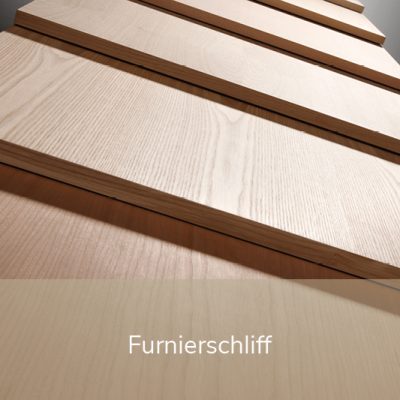

As versatile as the use of veneered parts is, so is their design: with grout paper, cutouts and solid bins. In addition, parts with an ever-increasing range of soft to hard veneers — some of them inlaid on one side — or parts must be sanded with protruding solid bucket. For economic reasons, the veneers are becoming ever thinner. Sanding technology must therefore achieve a high degree of flexibility in the industrial production of veneered parts with particularly innovative solutions. Heesemann veneer sanding units are equipped for this task thanks to:
a wide elastic pressure bar in the transverse and longitudinal sanding units, which ensures a large contact area with the workpiece.
sensitive workpiece scanning.
the unique continuous CSD® magnetic pressure bar, which means that there is no risk of sanding even in the edges and on cut-outs.
a tolerance adjustment of up to 2 mm in order to be able to clean even warped or deviating parts in thickness.
the computer-controlled automatic pressure calculation for the individual pressure shoes, e.g. for single-sided solid bins.
Cross-sanding units, which shear off the wood fibers projecting transversely to the veneer direction against the pore edges. At the same time, in the case of cross-veneered parts, the transverse bands reach the final sanding in the veneer direction.
a workpiece suction clamping system with which small parts such as drawer front pieces are safely transported.
a safety circuit and electronic brakes on the units, which prevent damage to the workpieces if the band breaks.
a program memory for saving various sanding settings in order to reduce set-up times to a minimum.
energy-saving intensive tape distribution for long service life of the tapes.